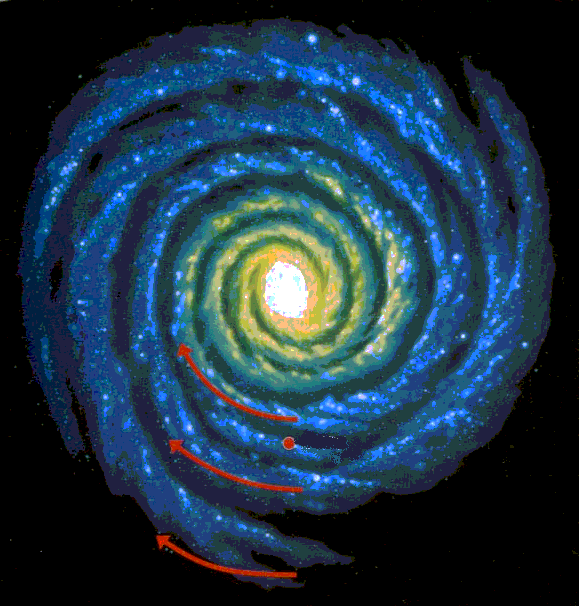
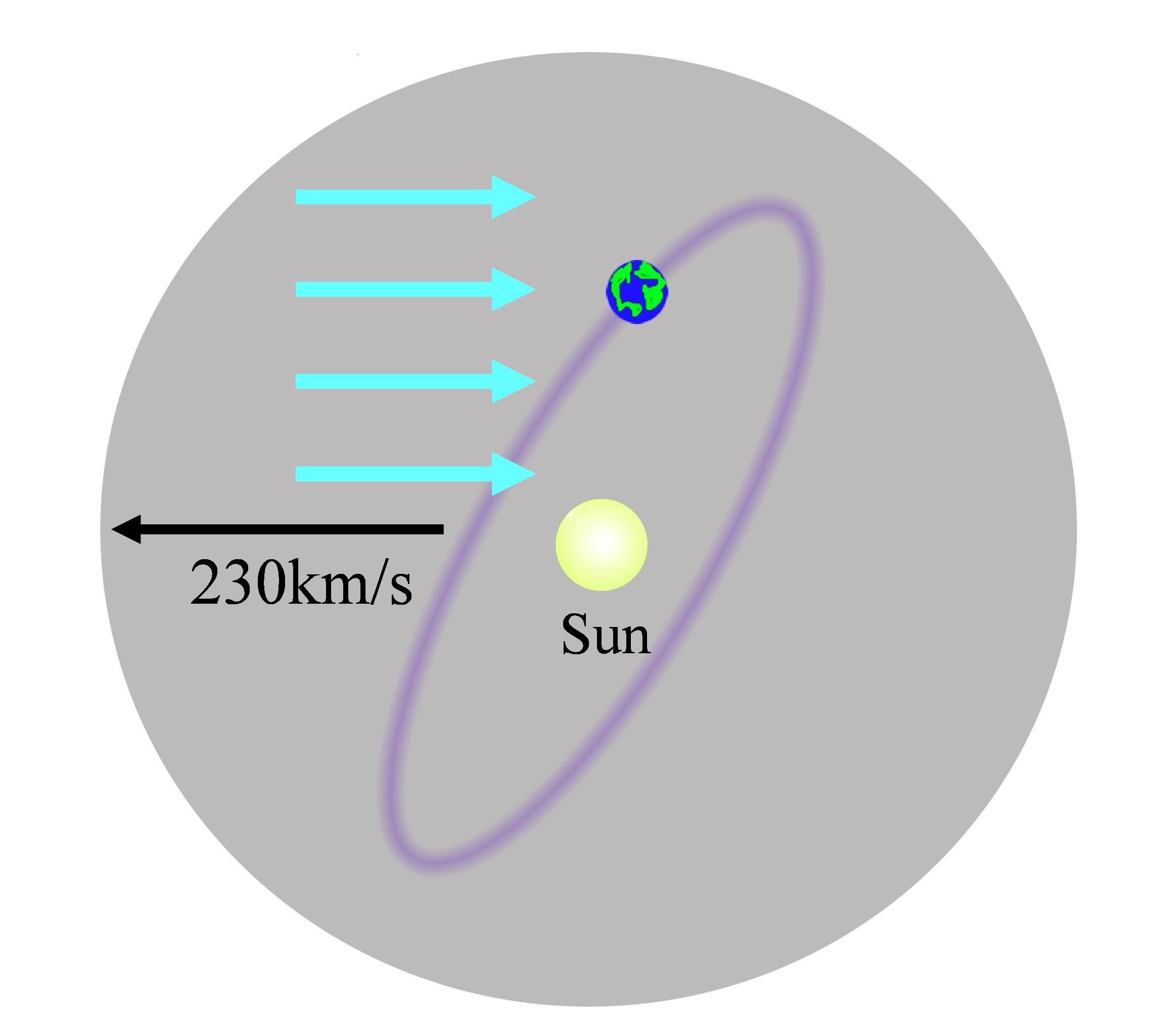
MINOWA Group |
みのわ研究室 |
Direct dark matter search experiment with a recoil-direction sensitive scintillation detectorIn dark matter search experiments, the most convincing signature of the WIMPs appears in the anisotropic directions of nuclear recoils. It is due to the earth's velocity through the galactic dark matter halo (about 230 km/s), and the direction should vary in accordance with the earth's rotation. |
反跳方向に指向性をもつシンチレーション検出器による暗黒物質の直接検出実験暗黒物質の探索実験において、バックグラウンドの中から真の暗黒物質由来の信号を同定するには、暗黒物質によって反跳された原子核の方向がわかればよい。銀河の回転により、地球を含む太陽系は銀河の暗黒物質ハローの中を約230km/sの速さで進んでいるので反跳方向はその逆方向に偏ることになるからである。さらに、地球の自転によりその方向は恒星時を周期として日変動する。 |


| It is known that scintillation efficiency of a certain kind of organic crystal to high energy heavy charged particles depends on the direction of the particles with respect to the crystallographic axes. This property makes it possible to propose a WIMP detector sensitive to the recoil direction of the nucleus if the effect is valid also in low energy regions where the dominant part of dark matter signal is expected. We, therefore, measured the carbon recoils in a stilbene crystal for recoil energies of 30 keV to 1 MeV and shown that the scintillation efficiency does vary by 7% depending on the direction of the recoil carbon. Refer to our publication for the detail. |
ある種の有機結晶シンチレータに高エネルギー荷電重粒子を入射したときに、発光効率が入射方向と結晶軸とのなす角度に依存することが知られている。もしこの異方性が、暗黒物質検出で重要になるような低エネルギーの領域でも見られるならば、原子核反跳の方向に感度のある暗黒物質検出器を作ることができる。
われわれはこのような観点から、スチルベン結晶を用いてその中の炭素原子の反跳方向による発光効率の変化を反跳エネルギー30keVから1MeVの範囲で測定した。 その結果は、われわれの論文 に報告されているが、下記の図に示すように、7%の異方性が観測された。 |
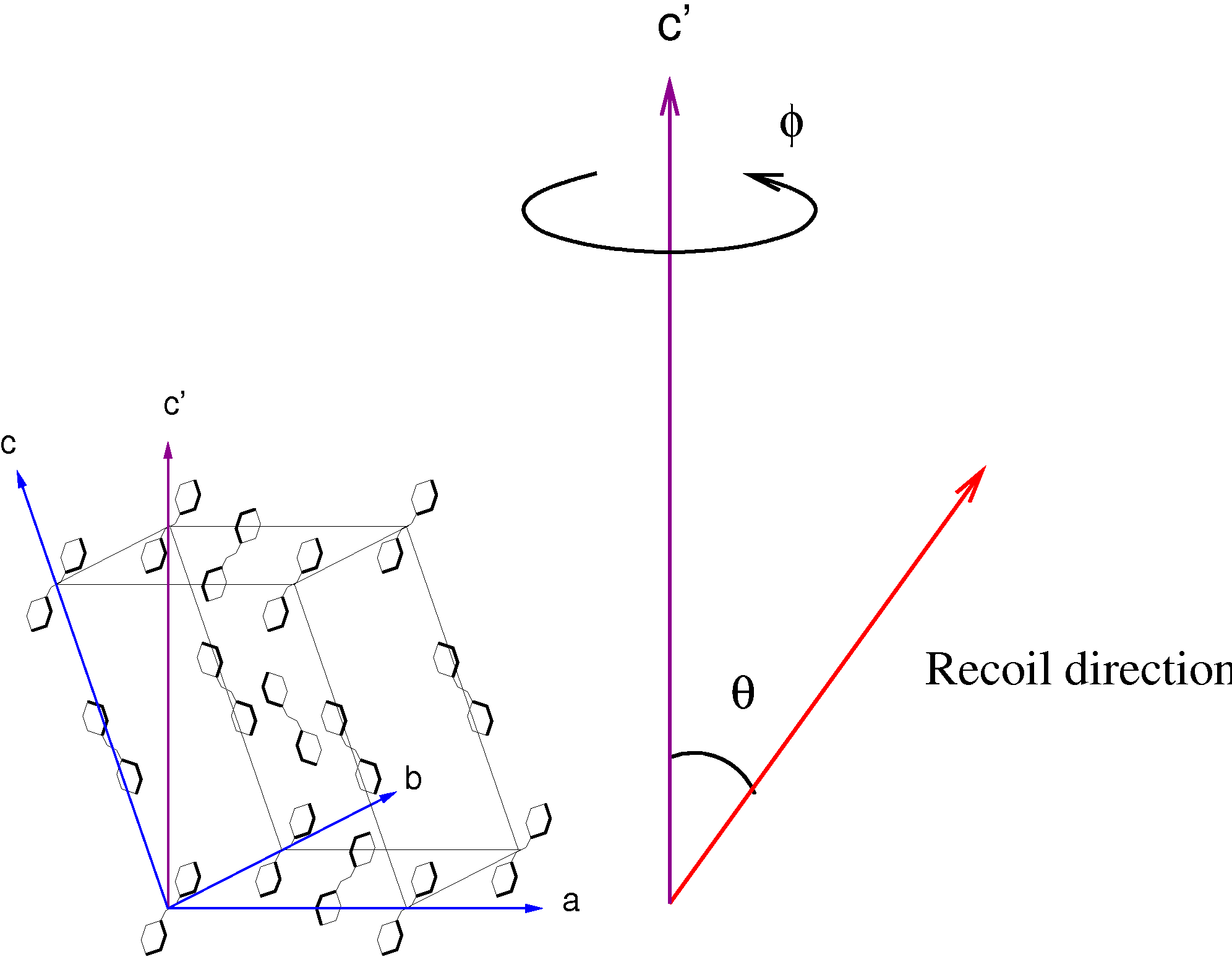
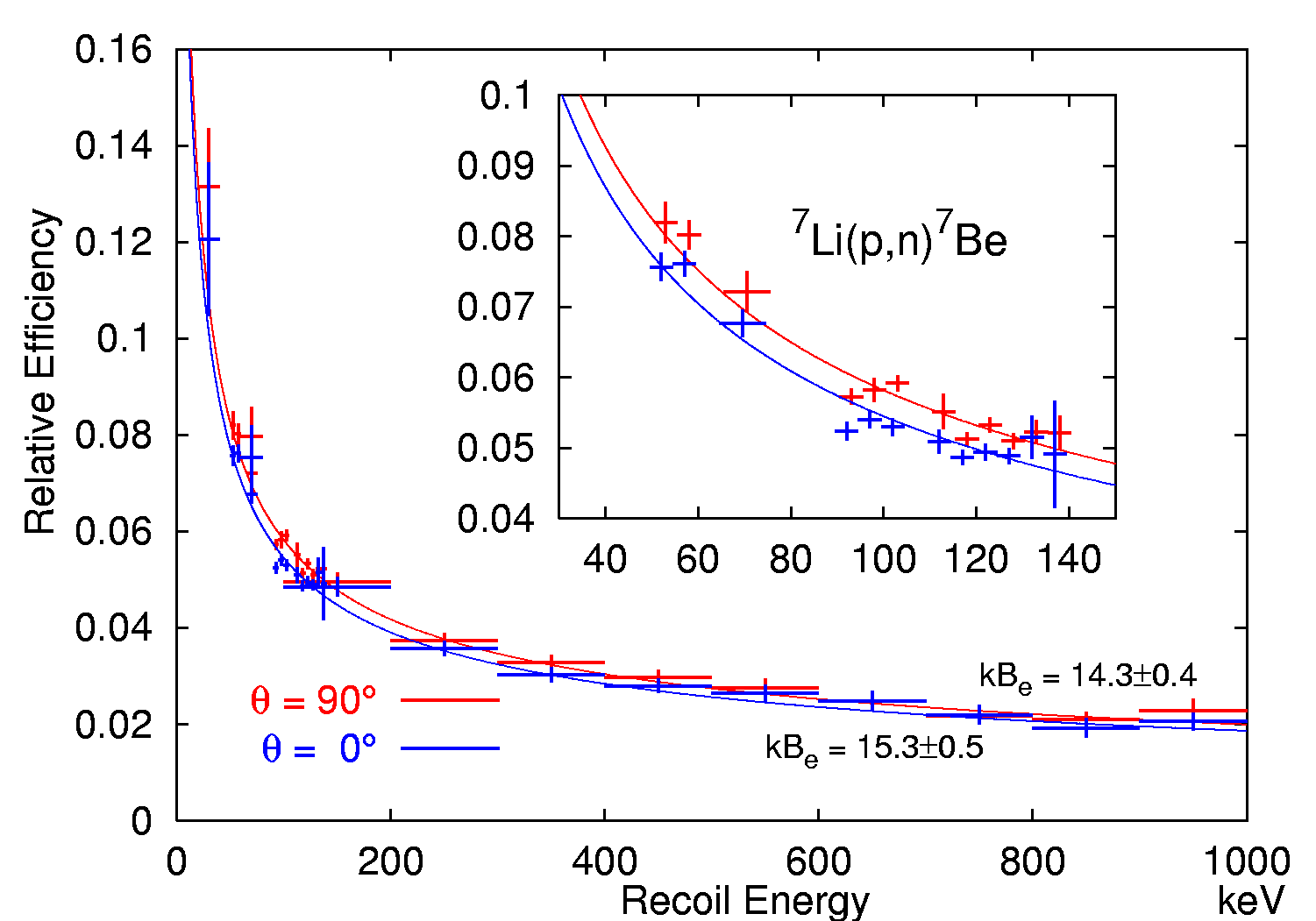
|
With the stilbene scintillator with such anisotropy it should be possible to observe diurnal variation of the dark matter signal detection rate if the crystallographic axis c' is aligned with the north-south direction in the horizontal plane as is shown in the following figure.
As the earth moves toward the constellation Cygnus, the dark matter particles come into the detector mainly in parallel to the axis c' at a certain time of the day, while they come perpendicularly after about 12 hours.
As reported in our paper, we carried out a pilot run for the dark matter search with 116g stilbene crystal in Kamioka Observatory. With the crystal fixed to the earth, we searched the modulation of the light output. Although no modulation signal was found, we obtained the spin-independent neutralino-proton cross section upper limit of 7.4 pb for the neutralinos with mass 50 GeV under the spherical isothermal halo model. The present results are the first limit in the world derived from the directional signature of WIMPs. The limit is rather looser than the present best limit in the world because of the small size of the detector crystal and the higher background rate yet to be eliminated. However, it demonstrated the effectiveness of the method of direction sensitive search for the dark matter with an implementation of the anisotropic organic scintillation crystal. |
次の図のように、このような異方性を持つスチルベンシンチレータの結晶軸c'を南北方向にあわせて暗黒物質を観測すれば、検出率の日変化が認められるはずである。地球の運動方向は白鳥座の方向であるから、あるときは暗黒物質はおおむねこの軸に平行に入射するが、およそ12時間後にはほぼ垂直入射となるからである。
これにもとづき、われわれは神岡地下実験室において116gのスチルベン結晶を使って試験的な暗黒物質探索実験を行った。実験では、結晶軸を水平北向きに固定し、シンチレーション光の変動があるかどうかを調べた。 われわれの論文に示したように これまでに、有意な変動は見つからなかったけれどニュートラリーノと陽子の散乱断面積の上限値を決めることができた。この結果は、暗黒物質粒子の方向性を利用したものとしては世界で初めてのものである。いまのところ、結晶も小さくまた放射線のバックグラウンドも十分には落としきれていないので、残念ながらこの上限値は世界記録よりもかなり悪い。しかし、有機結晶シンチレータの異方性を使って暗黒物質粒子の運動の方向を検知する手法の有効性を示すことができた。 |
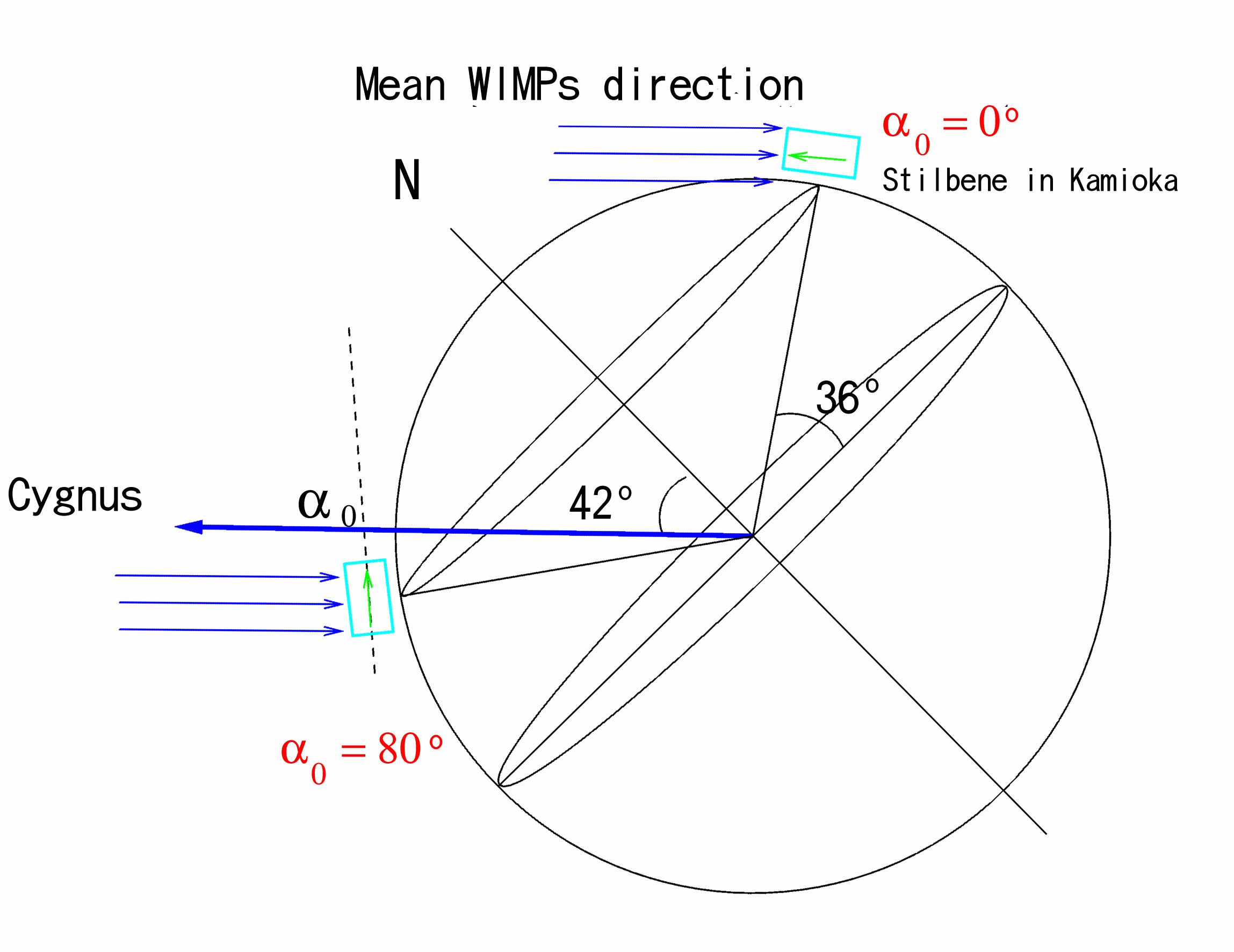
Last maintained
on 2004-06-09